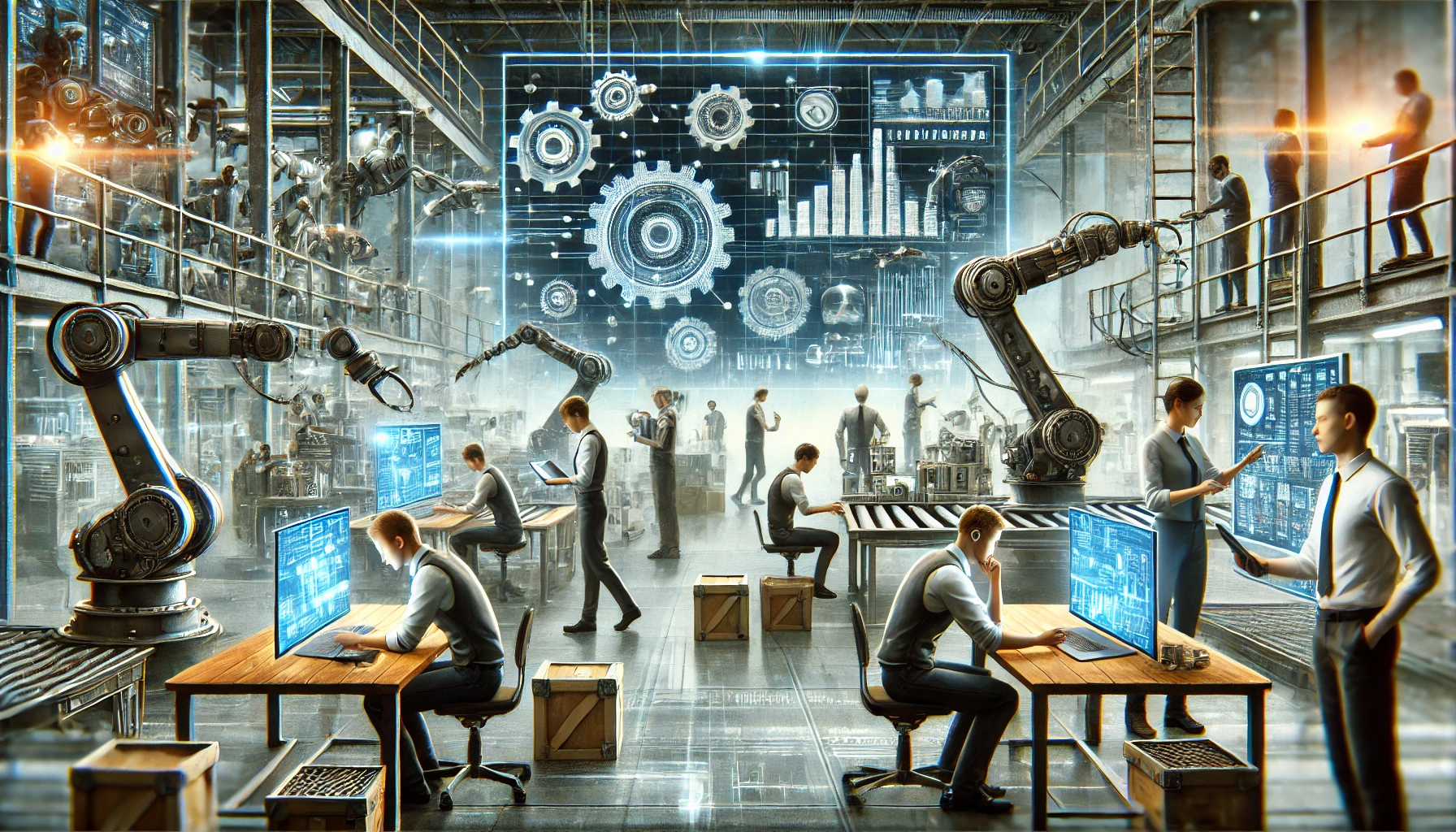The Impact of Automation on Jobs
Automation has become an integral part of modern industries and economies. While it offers numerous advantages, it also raises concerns about job displacement and changes to the workforce. From advanced robotics in manufacturing to artificial intelligence in customer service, automation is reshaping how tasks are performed. Below is a comprehensive exploration of the impact of automation on jobs, addressing both the positive and negative effects on employment.
1. Job Displacement in Certain Sectors
One of the most significant impacts of automation is the displacement of jobs, particularly in sectors that rely on repetitive tasks. Industries like manufacturing, logistics, and data entry are especially vulnerable to automation, as robots and algorithms can perform tasks more efficiently and at a lower cost. For example, self-checkout machines in retail and automated assembly lines in factories have replaced human workers.
2. Creation of New Jobs
While automation leads to job displacement in some areas, it also creates new opportunities. The development, maintenance, and programming of automated systems require skilled professionals. Jobs in fields like robotics engineering, AI development, and data science have increased as businesses integrate more technology. Additionally, automation can give rise to entirely new industries, such as autonomous vehicle operations or drone logistics.
3. Shift Toward Higher-Skilled Jobs
As automation handles more routine and repetitive tasks, the demand for higher-skilled workers has grown. Employees are increasingly expected to possess technical skills, critical thinking, and adaptability to work alongside automated systems. This shift encourages investment in education and training programs to upskill workers, ensuring they remain competitive in a changing job market.
4. Increased Efficiency and Productivity
Automation enhances efficiency and productivity, allowing businesses to perform tasks more quickly and accurately. Automated systems can work around the clock, leading to faster production times and higher outputs. This efficiency allows companies to grow, increasing their capacity to hire workers in areas that require human creativity, problem-solving, and customer interaction.
5. Impact on Wages
Automation can impact wages in two ways: for low-skill jobs, increased automation may depress wages, as companies can replace workers with machines that are more cost-effective in the long run. Conversely, for high-skill jobs, particularly those related to the design, implementation, and management of automated systems, wages can increase due to the specialized skills required.
6. Greater Flexibility and Work-Life Balance
Automation has allowed for more flexible work arrangements. With machines handling time-consuming tasks, employees in certain industries can focus on more creative and strategic activities. For example, in industries like software development or project management, automation allows teams to work remotely or adopt more flexible schedules, improving work-life balance.
7. Rise of the Gig Economy
Automation has contributed to the rise of the gig economy, where people take on short-term contracts or freelance work rather than traditional full-time jobs. Platforms like Uber and TaskRabbit use automation to match workers with tasks, creating new opportunities for earning income. However, this also comes with challenges, such as job insecurity and lack of benefits associated with full-time employment.
8. Increased Demand for Lifelong Learning
As automation continues to evolve, workers are expected to continually upgrade their skills to stay relevant. Lifelong learning has become essential, as traditional education is often insufficient to prepare workers for the rapid pace of technological change. Governments, educational institutions, and businesses are investing in reskilling and upskilling programs to help workers transition to new roles in the automated economy.
9. Challenges for Older Workers
Older workers may face challenges adapting to automation, particularly if they lack digital literacy or technical skills. This demographic may find it more difficult to compete in a job market that increasingly values technological proficiency. To address this, targeted training programs and policies are needed to ensure older workers can remain productive and employed in the face of automation.
10. Changing Organizational Structures
Automation is also reshaping the structure of organizations. With machines taking over routine tasks, companies are flattening their hierarchies, requiring fewer middle managers to oversee employees. This has led to more dynamic, team-based approaches to work, where employees focus on innovation and strategy rather than routine oversight.
Conclusion
Automation is transforming the job market in complex ways, bringing both challenges and opportunities. While certain jobs may be displaced by machines, new roles and industries will emerge, requiring a workforce that is adaptable, skilled, and continuously learning. The future of work will be defined by how individuals, companies, and governments respond to the ongoing advancements in automation technology. By investing in education, reskilling, and policies that support workers in transition, society can harness the benefits of automation while minimizing its disruptive effects.









